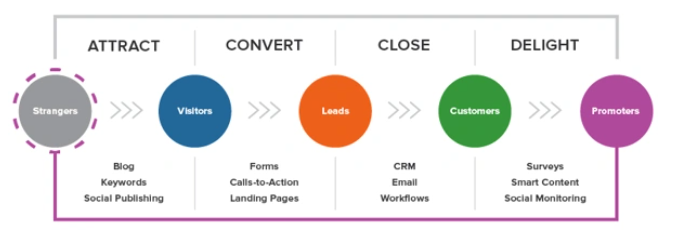Boosting Remote Team Success with Employee Engagement Tools
With the emergence of remote work culture, employee engagement has become a crucial factor in ensuring the success of an organization. Engaged employees not only feel motivated to perform better but also contribute to higher productivity and growth. However, engaging remote teams can be challenging due to communication barriers, lack of face-to-face interaction, and other factors. To overcome these challenges, many organizations are turning towards employee engagement software.
In this blog post, we will discuss how employee engagement software can help organizations engage their remote teams and achieve success.

Understanding Employee Engagement
Software-driven employee engagement holds many benefits for businesses, as evidenced by Blink reviews by satisfied users. Employee engagement is defined as the emotional commitment an employee has toward their work, organization, and goals. Engaged employees are more likely to go above and beyond in their roles and take ownership of their responsibilities. They also tend to be more loyal to their employer. But how do you measure employee engagement?
Some common indicators of high employee engagement include:
a. High job satisfaction
b. Low turnover rate
c. Positive feedback during performance evaluations
d. Willingness to learn new skills and take on new roles
e. Strong relationships with colleagues and team members
These indicators emphasize the importance of creating a positive work environment that fosters collaboration, learning opportunities, and trust among team members.
Challenges In Engaging Remote Teams
Remote workers face several challenges that can affect their level of engagement. These challenges include:
a. Lack of face-to-face interaction leading to isolation or disconnection from the team
b. Technology issues leading to difficulties in communication or collaboration
c. Time zone differences that make it difficult for team members to connect
d. Cultural differences resulting in miscommunication or misunderstandings
Overcoming these challenges requires addressing them proactively using effective strategies such as implementing an efficient communication process or providing training sessions on cross-cultural communication skills.
Role Of Employee Engagement Software
Employee Engagement software primarily focuses on improving employee engagement levels by enhancing their work environment and overall morale and reducing turnover through several strategies. One effective approach is recognizing and rewarding contributions consistently, which can be streamlined using employee rewards software to make employees feel appreciated and motivated.
Some of the key features that an employee engagement software solution provides include:
a. Employee Recognition: It enables managers to recognize employees for their outstanding contributions, thereby creating a positive work culture. Remote workers who receive timely recognition and rewards, such as a beautifully crafted crystal trophy, tend to show higher levels of engagement.
Personalized tokens of appreciation can foster a stronger connection to the organization despite physical distances. The software automatically sends notifications to employees' team members to encourage peer-to-peer recognition as well.

b. Pulse Surveys And Feedback Management: This feature allows organizations to gather feedback from remote workers regularly. The concerns are identified faster, addressed promptly, and implemented before they escalate into larger issues.
c. Learning & Development: Online training programs and courses can be offered to facilitate skill development and learning opportunities that are accessible anytime and anywhere for remote workers, enabling them to track progress made towards achieving set goals.
d. Rewards & Incentives Management: Through the utilization of gamification or points-based systems, virtual rewards programs offer companies an alternative way to appreciate remote employees. This approach proves advantageous as it provides incentives that extend beyond monetary perks, a fundamental motivator even for individuals who may not initially recognize their necessity, all while concurrently boosting productivity.
e. Communication Tools: These facilitate real-time catch-ups via instant messaging tools, video conferencing, or sharing regular updates through forums and chat platforms, making a good employee communication app essential for remote team engagement. As such, all team members can stay updated without the established workflow routines being interrupted.

How Employee Engagement Software Can Benefit Remote Teams
Remote teams can enjoy several benefits when a company utilizes employee engagement software:
a. Enhanced Communication: Providing online communication channels empowers teams to interact more frequently and effectively, eliminating infrastructure hindrances and ensuring seamless collaboration.
Regardless of location, employees can engage in regular check-ins with team leaders, preventing feelings of isolation that can negatively impact engagement levels. An online daily log book can further support this by allowing team members to document their daily progress, surface blockers, and share achievements in real time, creating a transparent and accountable work environment.
b. Amplified Access To Information And Resources: Irrespective of their location within the organizational structure, employees can access information and data wherever there is an internet connection. Solutions like AI-driven talent marketplace, for example, help bridge the gap by offering personalized career pathing and internal mobility tools, ensuring employees stay engaged and motivated even in remote settings.
This functionality guarantees the continuity of workflows, avoiding stagnation and enabling employees to maintain motivation towards their tasks, ensuring that delays due to a lack of required resources do not occur.
c. The Importance of HRIS Software: In the era of remote work, keeping teams engaged and connected requires more than just good intentions—it demands the right tools. Enter HRIS software, a game-changer for modern HR management. According to a study by PwC, 73% of organizations are investing in HR technology to improve employee experience and streamline operations.
Here’s how HRIS software can transform your remote workforce:
- Centralized Data Management: Store and access employee information securely in one place, reducing errors and saving time.
- Improved Compliance: Automate regulatory updates and reporting to comply with labor laws.
- Enhanced Employee Engagement: Provide self-service portals for employees to manage their data, request time off, and access benefits.
- Streamlined Onboarding: Simplify the onboarding process for remote hires with automated workflows and digital documentation.
By integrating HRIS software into your employee engagement strategy, you can foster a more connected, productive, and compliant workforce—no matter where your team is located.
d. Improved Work- Life Balance: Employee Engagement software fosters a healthier work-life balance through supportive activities for stress relief, mindfulness, and well-being programs. This is facilitated by tools like health challenge platforms that permit employees to engage in healthy competition with colleagues while simultaneously tracking their progress. Encouraging healthy habits serves to promote employee retention and elevate engagement levels.
e. Transparent Feedback Channels Enhancing Goal Setting: Employee engagement software simplifies the process of obtaining feedback on set goals. Employees can provide actionable input, allowing managers to compare actual progress made by employees against initial targets over specified periods. When the workforce feels their input is heard, there is heightened energy toward collaborative efforts without losing momentum.
Conclusion
Employee engagement has become even more crucial in remote work cultures, where teams are dispersed across different locations. Employee Engagement Software offers an effective avenue for engaging remote teams, as it facilitates the recognition of achievements across organizations and keeps motivation levels high among employees, thus facilitating employee retention.
Organizational leaders striving to uphold high-level performance should prioritize the alignment of culture, values, employee morale, and overarching strategy objectives. This involves streamlining tasks, making them more manageable while enabling stunning outcomes to be achieved with minimal effort, whether through electronic means or online approaches.






